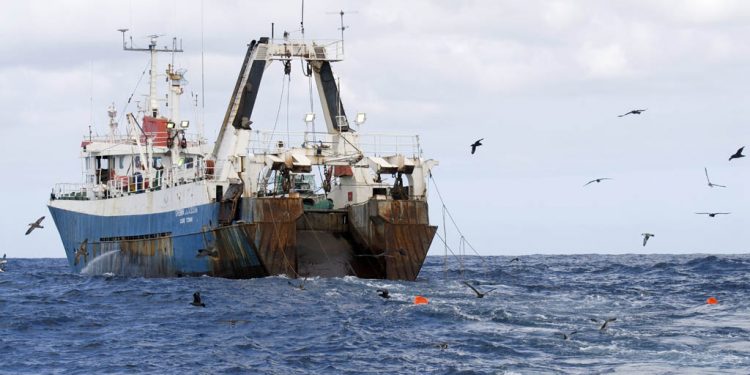MEPs and ministers strike informal deal to ban deep sea fishing below 800 metres

MEPs and ministers struck a deal on a ban on fishing below a depth of 800 meters in the North-East Atlantic. The ban, agreed on Thursday afternoon, will apply to bottom trawling and would also restrict deep-sea fishing to the area where it took place between 2009 and 2011.
“When the European Commission originally proposed a ban on deep sea fishing, I made the bet that we could reconcile, socio-economic imperatives with environment protection ones, to further the cause of sustainable development. Contrary to claims made by prophets of doom, we have managed to strike a balance between fishing effort and ecology”, said rapporteur Isabelle Thomas (S&D, FR).
Depth limits
Parliament’s and Council’s negotiators agreed on setting a depth limit of 800 metres, so that no deep sea fishing will take place beneath this limit. This new provision will protect the fragile vulnerable marine ecosystems of the deep sea bed.
A separate provision for protecting the Vulnerable Marine Ecosystems (VME) was added to the regulation, whereby for deep sea fishing activities below 400 metres if the quantity of VME indicators (detailed list annexed to the regulation) caught exceeds certain thresholds (defined in the new regulation) the vessel would need to immediately stop all fishing operations and resume only when it has reached an area at least five nautical miles away from the area it encountered VME.
Fishing area covered by the new regulation
The EU will freeze the “footprint”-area where deep sea fishing activities took place- in EU waters in the North-East Atlantic to the area where deep-sea fishing took place in 2009-2011. This will apply to vessels targeting deep sea species; i.e. those whose deep sea species catch makes up more than 8% of the total on at least one fishing trip during the year.
Data collection, transparency, observers on board
MEPs inserted stronger transparency safeguards by including obligations to provide public information on EU vessels targeting deep-sea species and to report all catches (fish and vulnerable ecosystems). Member states will also be required to provide information on the location of vulnerable ecosystems (impact assessments) and the EU Commission will assess this data annually and adapt the allowed fishing area accordingly (using implementing acts).
20% of EU vessels will need to have an observer (scientist) on board to ensure the collection of timely and accurate data.
Next steps
The informal agreement will now need to be endorsed now by Parliament’s Fisheries Committee and the Council. The plenary vote is foreseen for November.
Background
Technological progress in the 1980s and 1990s contributed to new forms of fishing at previously unexplored depths, from several hundred to several thousand metres below the surface. But deep-sea ecosystems still remain largely unknown today. Some deep-sea fish species can live for a very long time (over a century in the case of the orange roughy), and some deep-sea corals can be thousands of years old. Very slow growing and late reproducing fish make such a stock highly sensitive to overfishing. Vulnerable marine habitats (of corals or sponges, for example) are also particularly sensitive to some fishing methods. In view of the threats to deep-sea stocks, and recognising the fragility of deep-sea ecosystems, initiatives have progressively been developed, both globally (e.g. UN Food and Agriculture Organisation) and at regional level (e.g. North East Atlantic Fisheries Commission (NEAFC) to promote more responsible exploitation of deep-seas.
The North-East Atlantic Ocean is dominated by deep ocean basins and the morphology of the sea floor is dominated by two deep areas on both sides of the Mid-Atlantic Ridge, with depths down to 5,000 metres. The EU vessels targeting deep-sea species are French, Spanish, Portuguese, Irish British, or German.
Source : European Parliament
Photo credit: European Parliament


